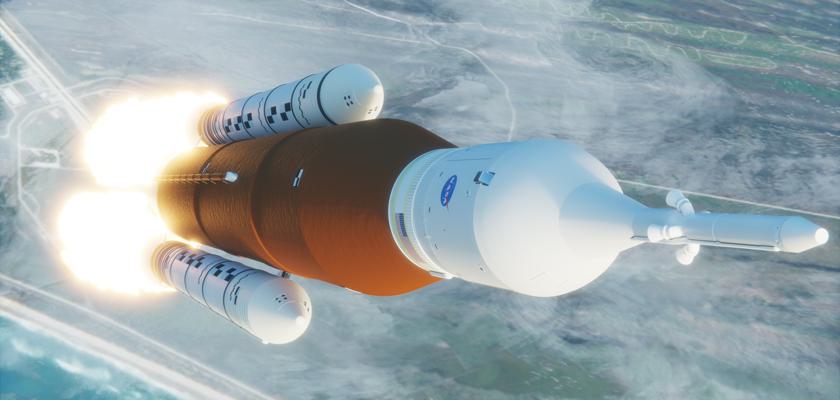NASA’s new Artemis I rocket is being prepared for an early June return to its Kennedy Space Center, Florida launchpad. It will be a second attempt to successfully conduct a full vehicle checkout that includes complete propellant fueling and a full-up final countdown rehearsal that will embody everything short of firing the 8.8-million-pound thrust rocket engines for liftoff.
Huntsville’s Marshall Spaceflight Center rocket engineers always anticipate unexpected problems to arise the first time they attempt to prepare and launch a brand new rocket design, but when that rocket is longer than the distance between the two goal lines of a football field and weighs in at 5.75-million pounds, it wasn’t surprising to encounter a few glitches. Some of those problems included a helium propellant pressurization system check valve, a liquid hydrogen leak, and ground support systems issues. Identifying and correcting such problems is one of the primary reasons that NASA conducted the initial attempted countdown dress rehearsal of the Artemis 1 moon rocket at Launch Complex 39B on April 1st of this year.
Last week, Tracy Lamm of Huntsville’s Lockheed Martin team summed up the realistic and cautiously optimistic attitude of the industry and NASA team that has designed and built the world’s most powerful rocket with a budget only one-tenth the relative size of the federal budget percentage that the 1960s Apollo-era NASA enjoyed.
“Not everything’s going to work right, but that’s O.K., because we’re going to learn from it and we’re going to try again, and we’ll make it better," said Lamm.
When 1819 News asked Marshall Spaceflight Center spokesperson Madison Tuttle if this second rollout and testing of the moon rocket will be an identical repetition of all of the checkout and test activities from the first rollout, or if some procedures have been changed, added, or dropped, Tuttle explained, “It will be close, but not nearly identical. The ground systems teams have removed some of the sensors that they had on the rocket during the first rollout. They were in place just to collect data on how the rocket responded to making the trek to the pad and they determined everything looked okay and they wouldn’t need to duplicate those efforts for the upcoming rollout.”
As for the actual countdown rehearsal, Tuttle explained that, “… some procedures have been slightly modified and refined, but the main test objectives and countdown sequence will remain the same.”
To connect with the author of this story, or to comment, email Jim.McDade@1819News.com.
Don’t miss out! Subscribe to our newsletter and get our top stories every weekday morning.










